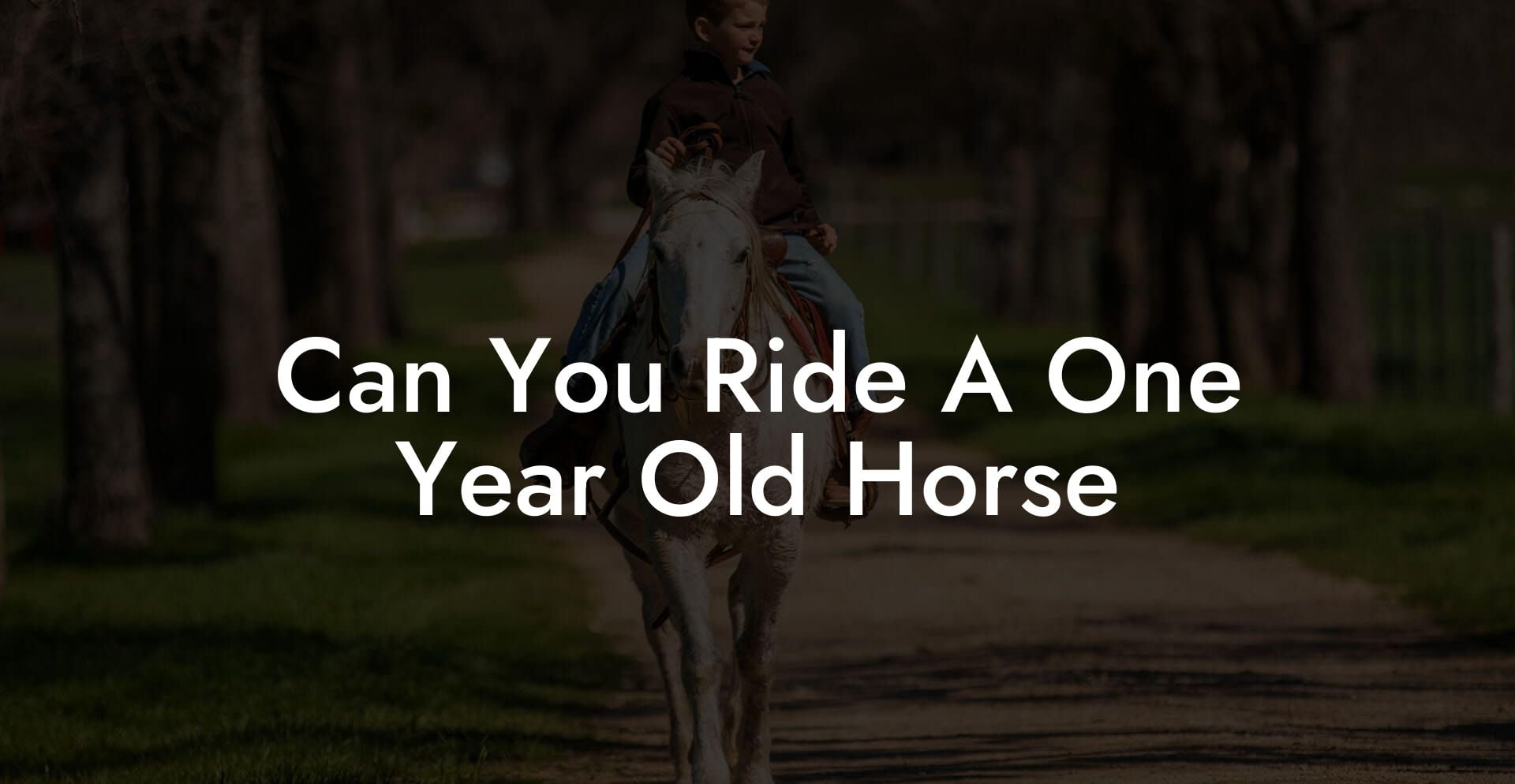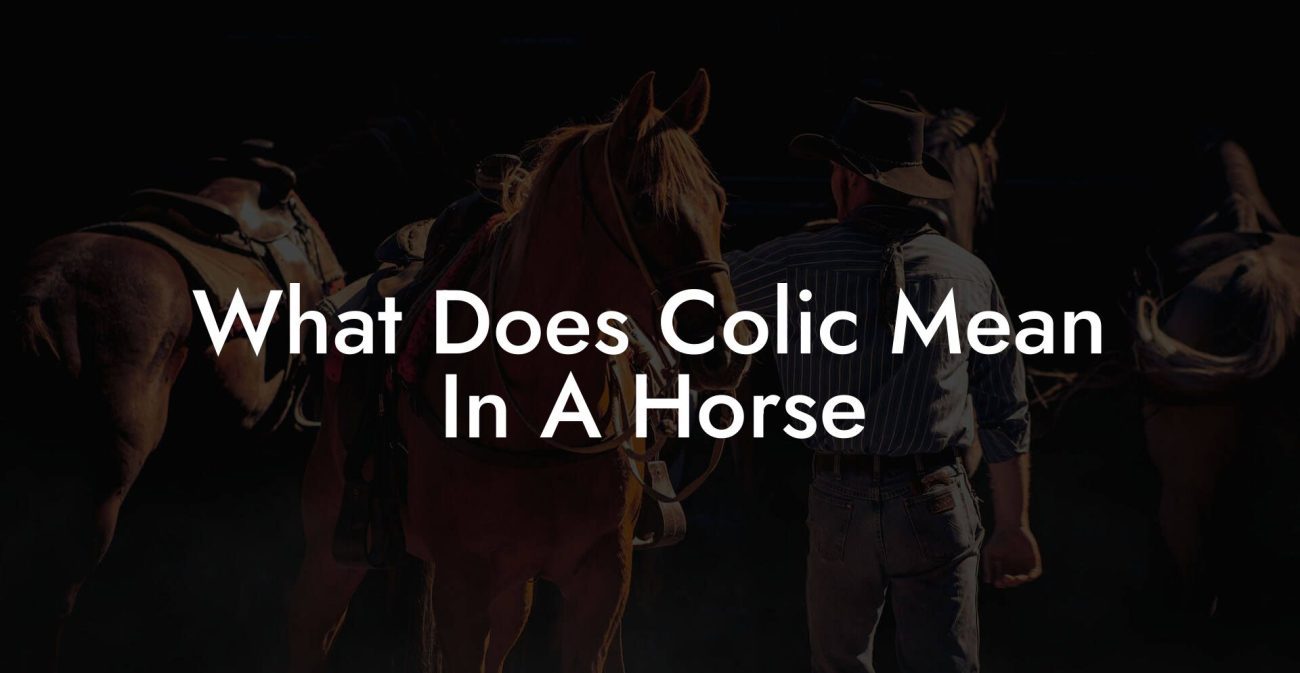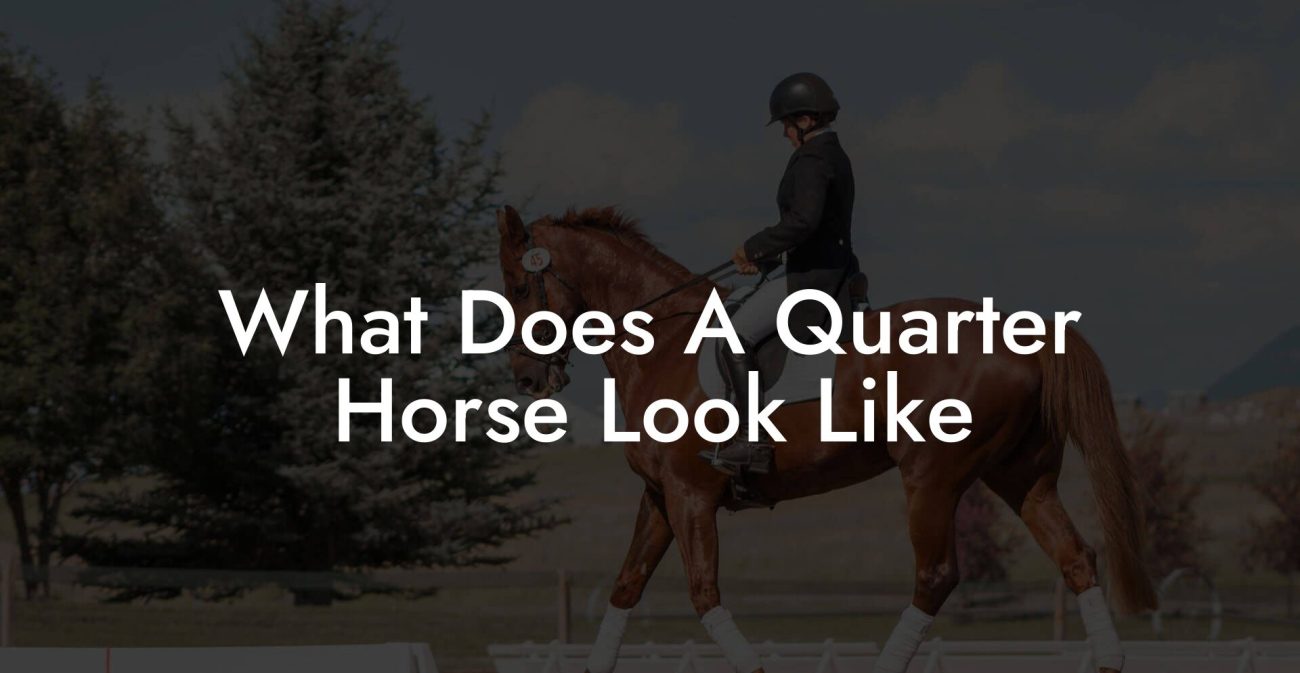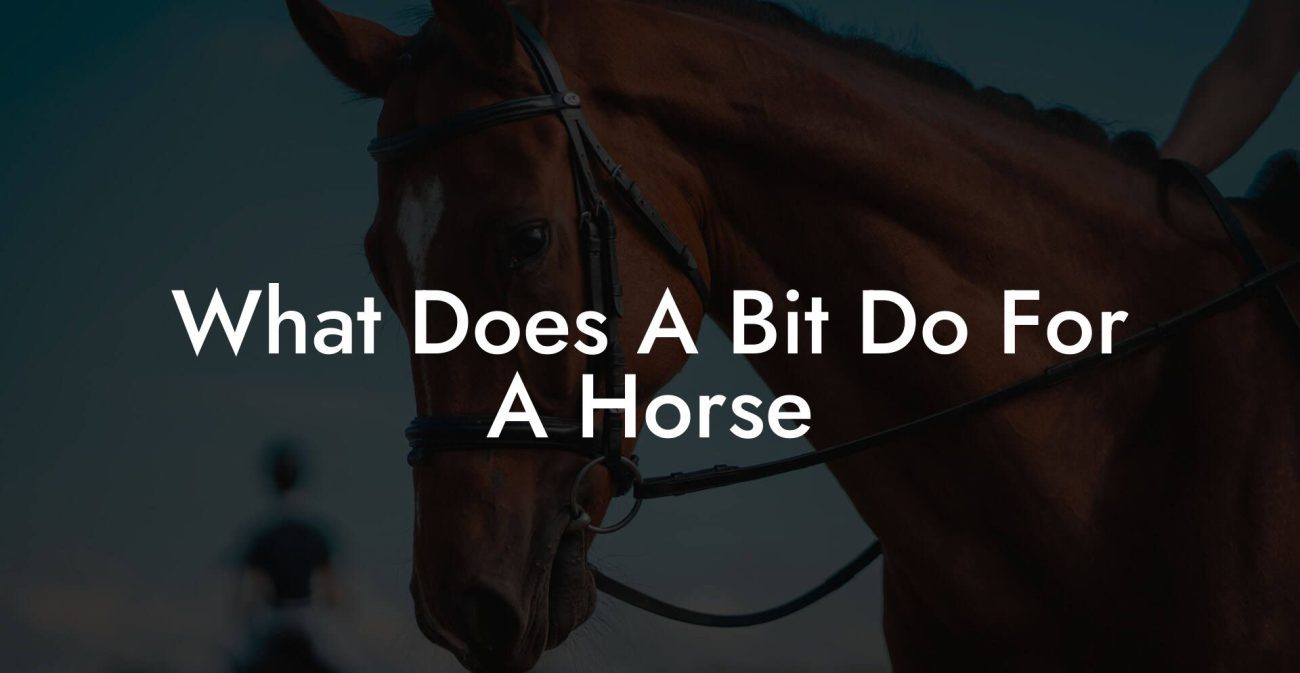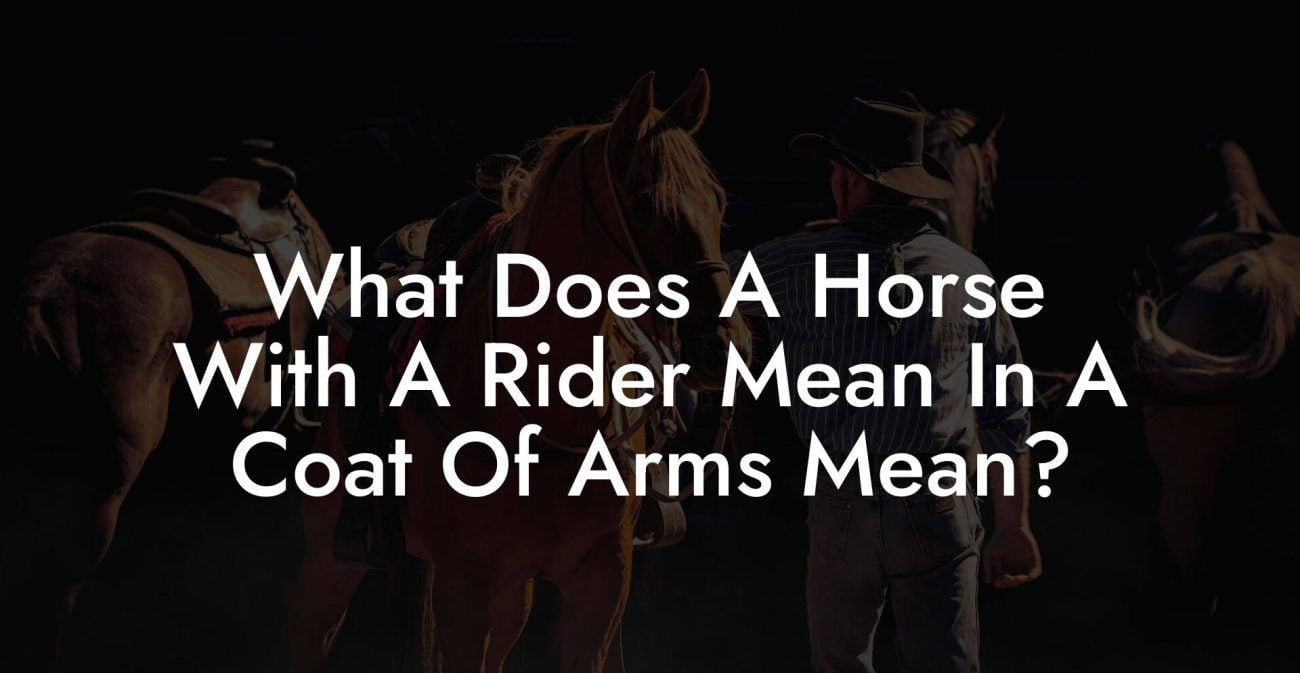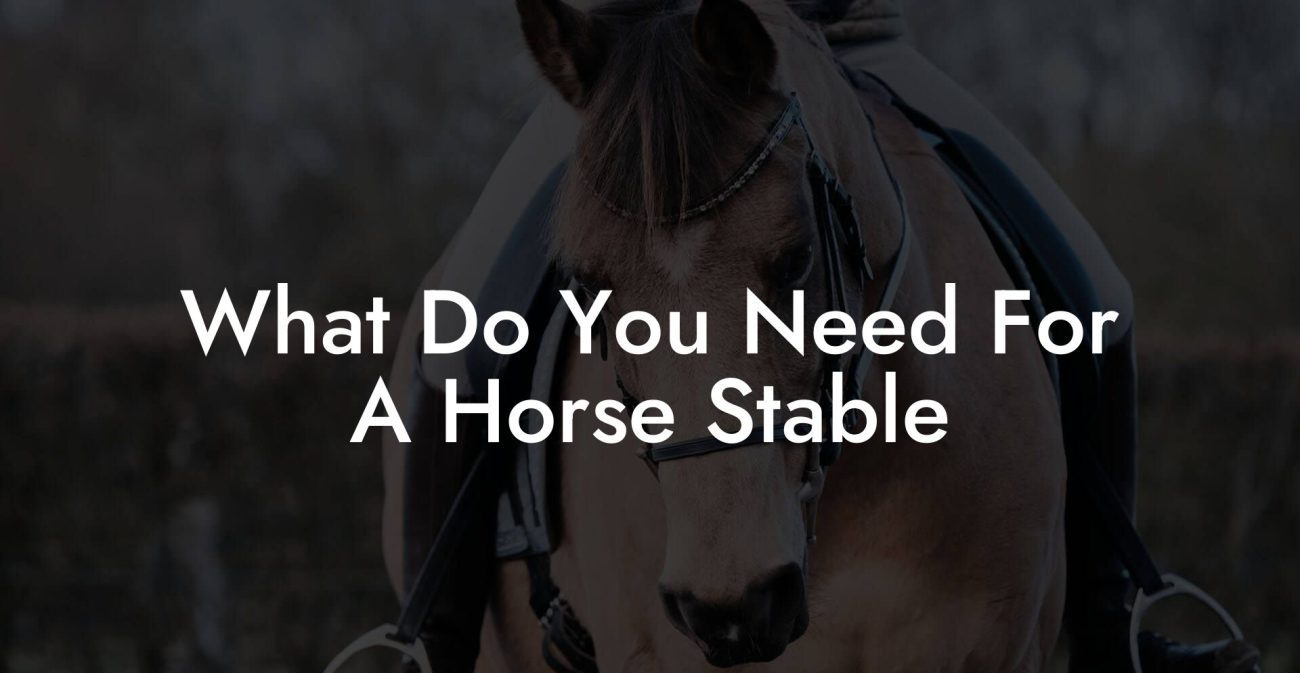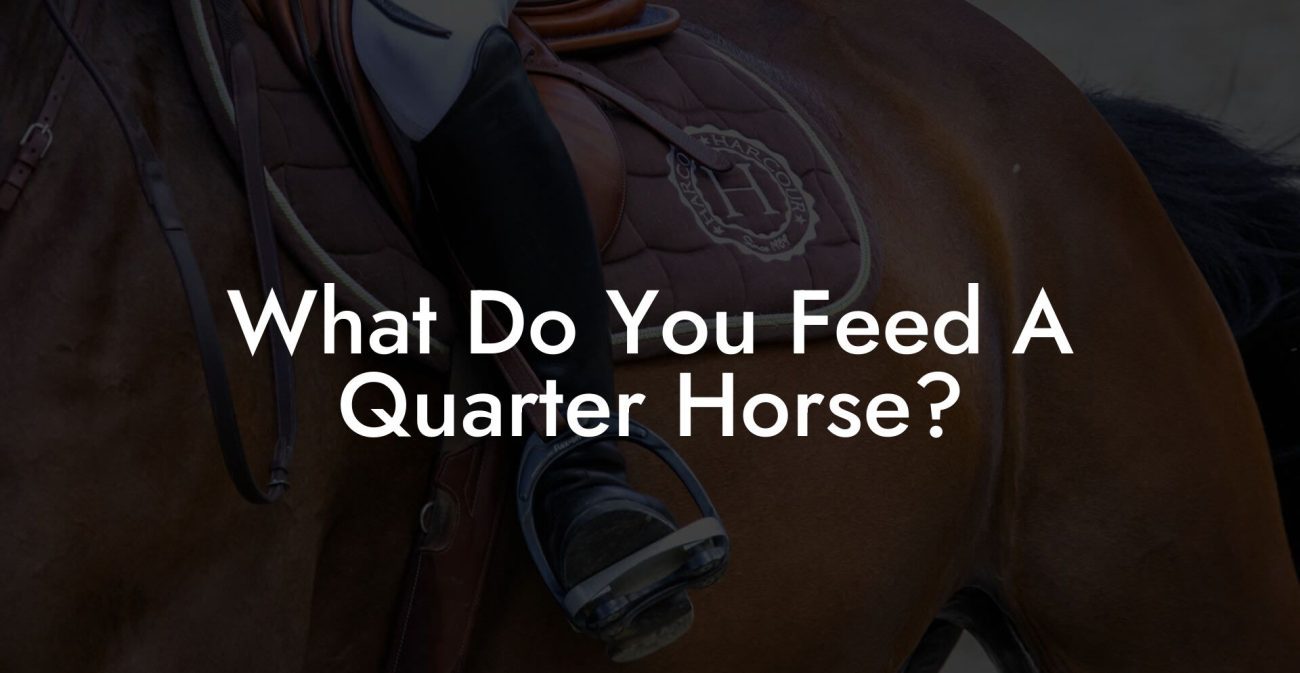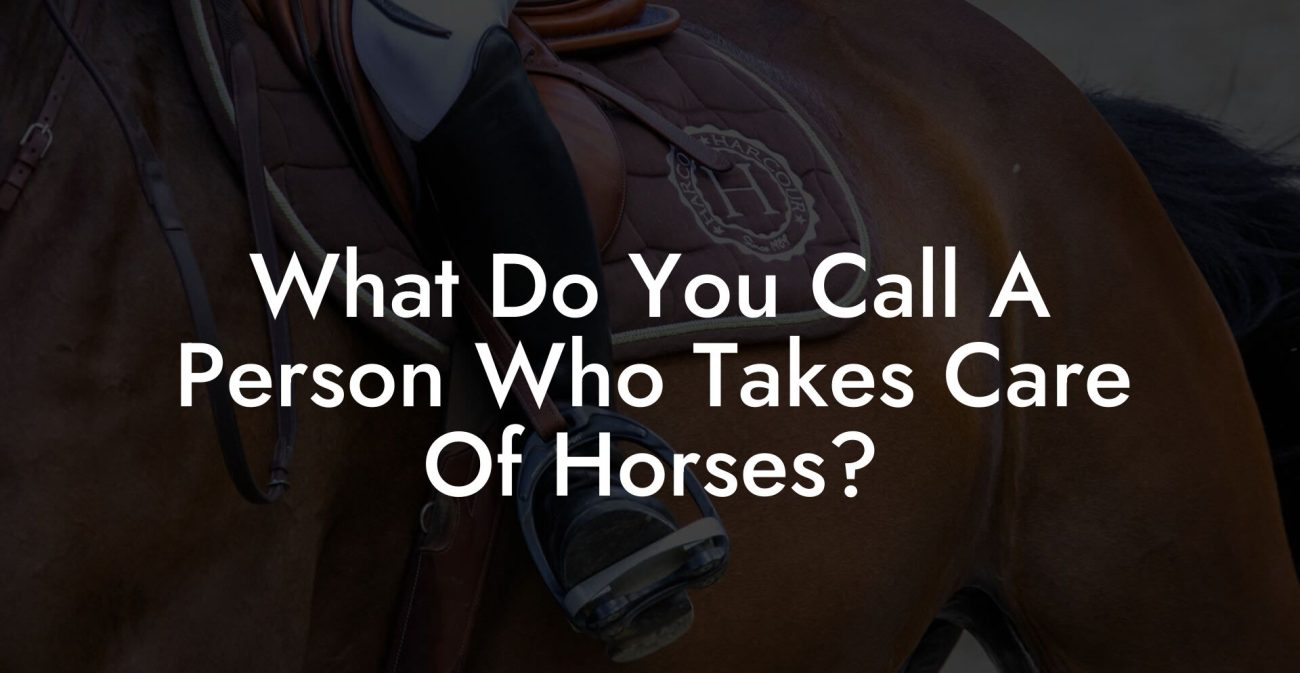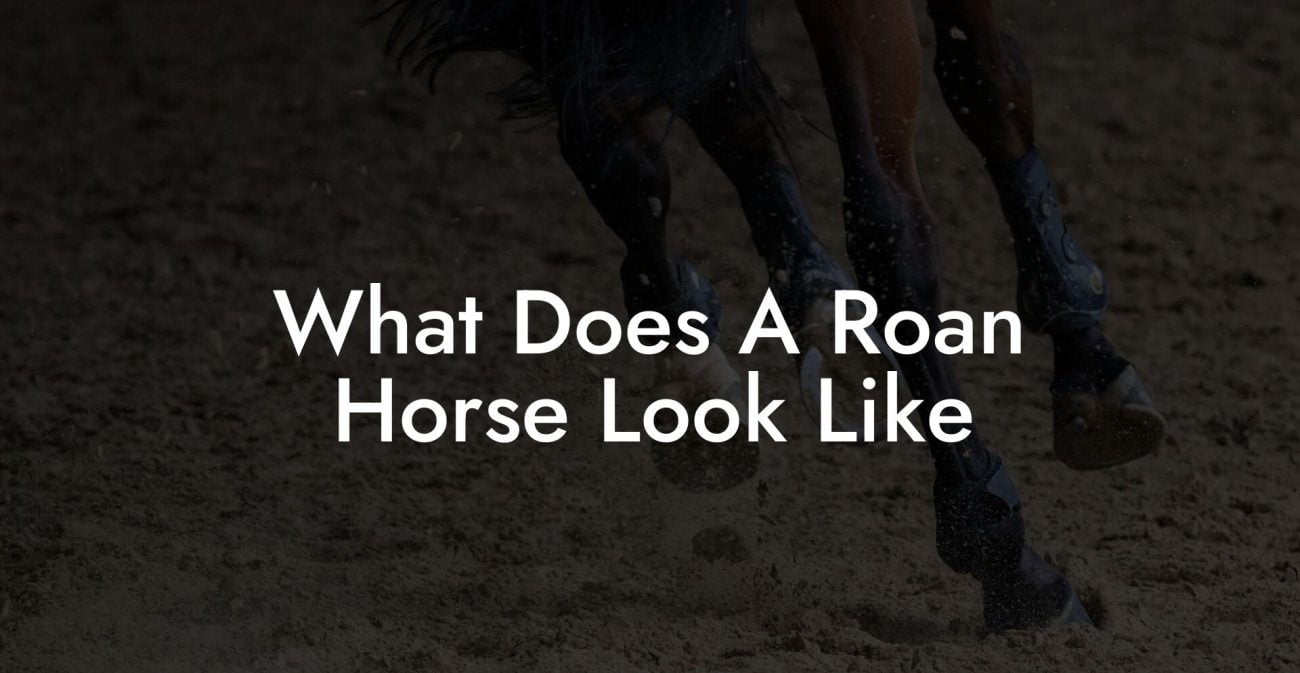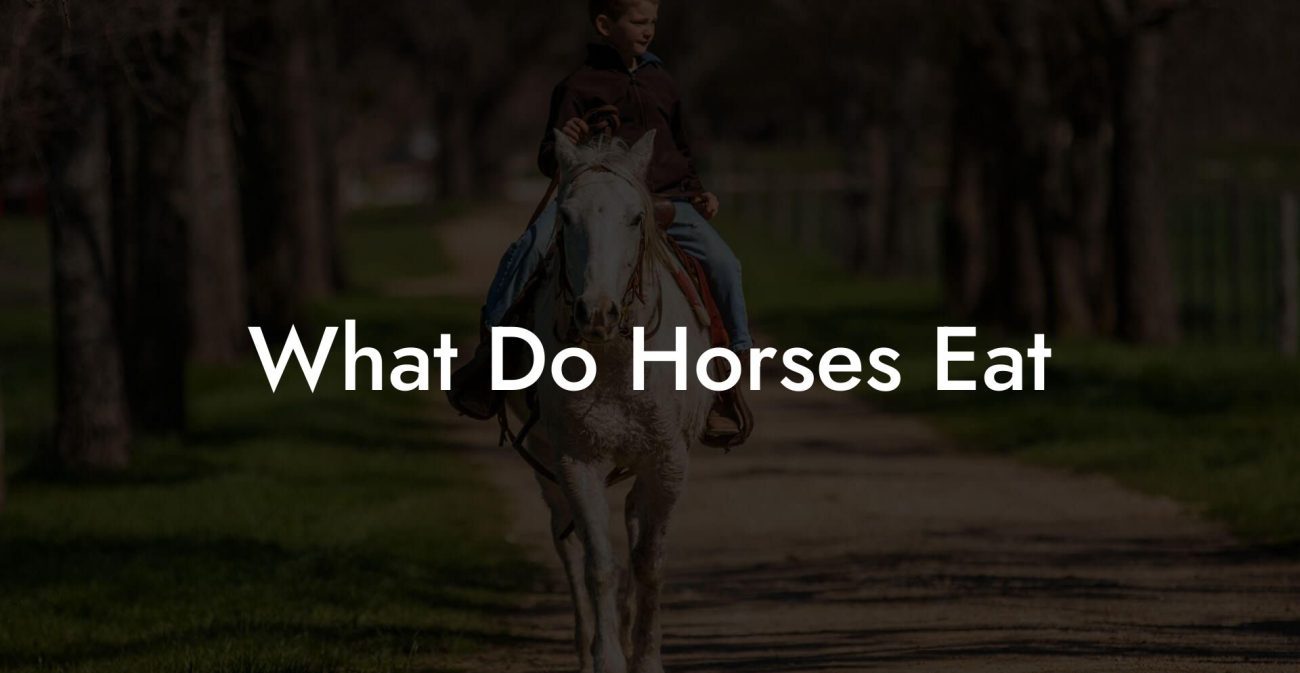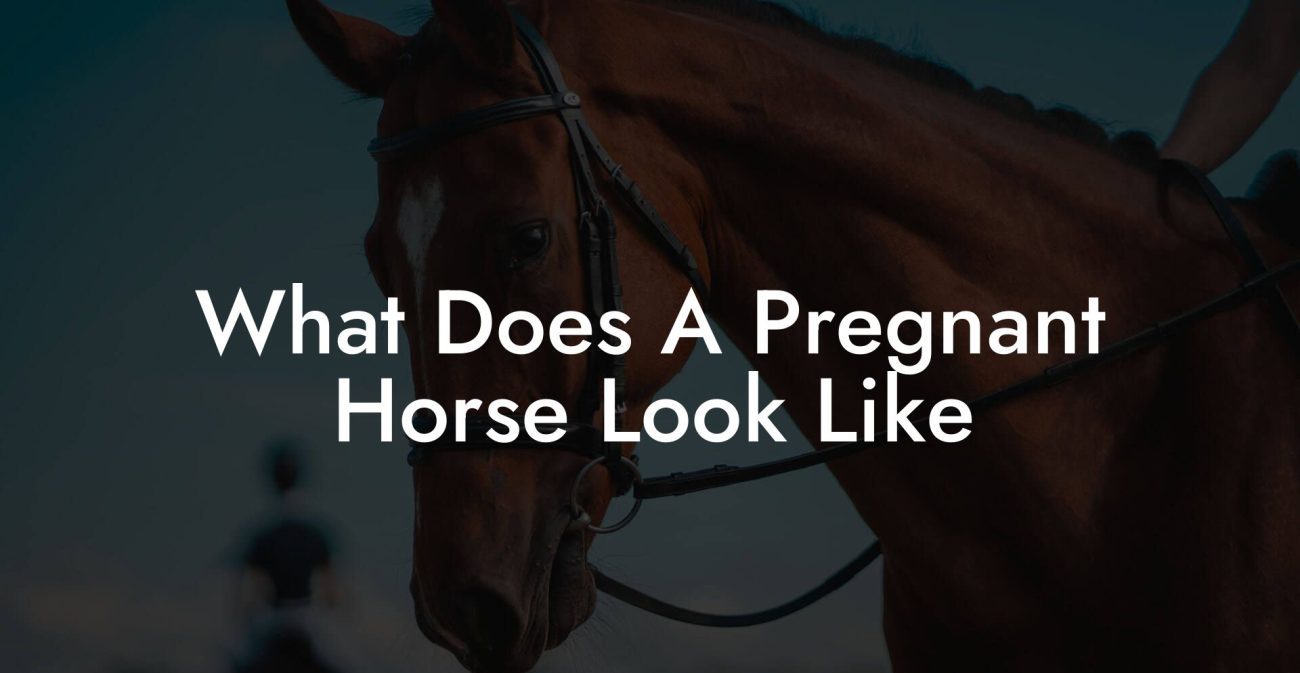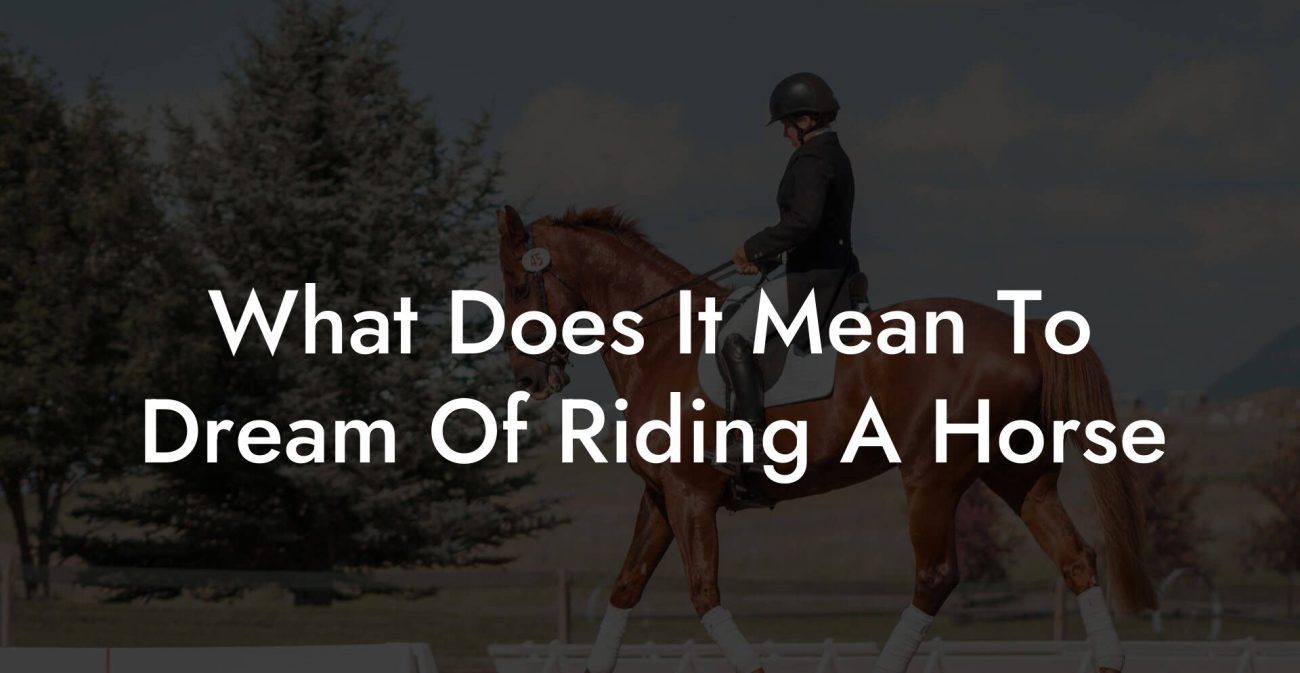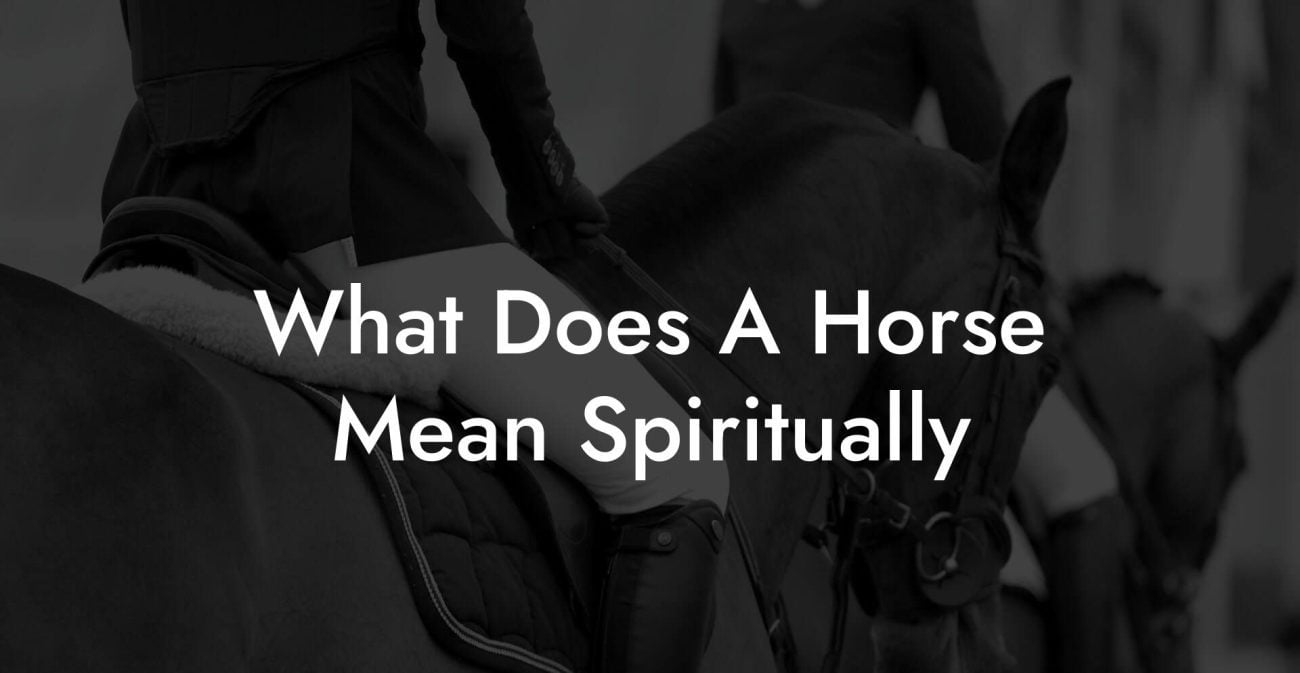Daring riders and curious horse enthusiasts, ever wondered if your one-year-old equine friend is truly ready to hit the trail or if it’s best to wait a few more moons? Buckle up as we gallop through the ins and outs of riding a one year old horse, discovering everything from equine growth spurts to training dos and don’ts, with a dash of humor and genuine passion for the art of horse care.
Quick Links to Useful Sections
- Understanding the One-Year-Old Horse: A Snapshot of Youthful Vitality
- The Science Behind Equine Growth and Development
- Developmental Milestones in a One-Year-Old Horse
- Physical Growth
- Mental and Social Development
- Muscle Build-Up and Coordination
- Can You Ride a One Year Old Horse? Safety and Ethical Considerations
- Training and Groundwork: Laying the Foundation
- Desensitization and Trust-Building
- Introducing the Tack
- Basic Commands and Handling
- Expert Opinions: When Riding a One-Year-Old Horse Might Be Considered
- The Pros and Cons of Riding a One-Year-Old Horse
- Pros
- Cons
- Maintaining Optimal Care for a One-Year-Old Horse
- Nutritional Needs
- Exercise and Controlled Activity
- Regular Veterinary Care
- Safe Handling Practices
- Real Experiences: Stories from the stable
- Case Study: The Baby Colt Who Grew Up to Be a Champion
- Case Study: Navigating Behavioral Hurdles
- Expert Insights: Veterinarians and Trainers Weigh In
- Training Techniques to Prepare for Future Riding
- Ground Manners and Handling Exercises
- Introducing the Saddle and Bridles Gradually
- Simulated Riding Positions
- Resources and Community Support: Your Next Steps
- Integrative FAQs: Your Top Questions Answered
- Your Journey with a Young Horse: Embracing the Learning Curve
Understanding the One-Year-Old Horse: A Snapshot of Youthful Vitality
A one-year-old horse is not just a mini equine, it’s a bundle of energy, curiosity, and sometimes, stubborn personality traits that can leave even seasoned riders in awe. At this age, horses are still growing and exploring the world around them, which means their bones, muscles, and minds are all in a state of rapid development. While they might look full-grown and sporty, there’s much more beneath that sleek coat than meets the eye.
Riding a one year old horse is a topic wrapped in layers of tradition, training experience, and modern equine science. The common question plaguing new horse owners and riders alike is: “Can you ride a one year old horse?” The answer, however, isn’t as black and white as a canter on a sunny day. It depends on several factors, including the breed, management practices, individual development, and, of course, the purpose of riding.
In this guide, we’ll dive into the anatomy of these youthful horses, explore expert opinions on riding practices, cover the basics of young horse care, and offer some practical tips to keep both rider and horse safe and happy.
The Science Behind Equine Growth and Development
To truly understand whether a one-year-old horse is ready for riding, it’s crucial to grasp the fundamentals of equine growth. At one year old, horses are undergoing significant physiological changes. Their skeletal structures, especially the joints and growth plates, are still soft and malleable. Think of it like a house under construction, solidifying walls and floors are essential before you can move the furniture.
During this stage, nutrition, exercise, and management are vital in ensuring proper development. Overloading a young horse with too much ridden work too soon can result in damage or long-term issues. Conversely, controlled, gentle handling and proper groundwork can pave the way for a versatile and sound adult horse.
So, when you hear someone ask, “Can you ride a one year old horse?” consider what type of riding is being discussed. Light groundwork, basic desensitization, or short, controlled riding sessions may be acceptable under professional supervision. However, competitive or rigorous riding can be a recipe for disaster given the delicate state of a young horse’s development.
Developmental Milestones in a One-Year-Old Horse
Horses hit different milestones at varying rates, but most experts agree that the year mark marks a critical crossroads. At one year old, a horse is typically in its juvenile stage, where curiosity runs wild alongside burgeoning strength. Let’s break down the key developmental areas:
Physical Growth
The growth plates in a horse’s legs and spine haven’t fully solidified yet. This flexibility is great for adapting to physical tasks, but it’s also a cautionary period where overexertion can cause lasting damage. Veterinarians and trainers often recommend limiting high-impact activities until these areas mature.
Mental and Social Development
Much like teenagers, one-year-old horses are exploring boundaries and establishing social hierarchies within their herds. They’re learning about trust and communication, and if handled correctly, can develop a deep bond with a confident, empathetic trainer.
Muscle Build-Up and Coordination
Muscular strength is rapidly increasing during this phase. However, coordination may be off-balance, leading to clumsy movements or unpredictable behavior. Early training should focus on gentle guidance rather than performance enhancement.
Understanding these milestones helps in deciding just when and how to introduce a one-year-old horse to riding. The emphasis should be on long-term performance and health rather than short-term showmanship.
Can You Ride a One Year Old Horse? Safety and Ethical Considerations
The burning question remains: can you ride a one year old horse? The answer is nuanced. In many equestrian communities, riding a horse at such a young age is frowned upon due to the potential risk of stunting development or causing injury. However, controlled exercises and groundwork may be allowed under expert supervision.
Here are some safety and ethical considerations to weigh:
- Growth Plate Vulnerability: Riding can place undue strain on parts of the body that are still growing. Overexertion during this critical period may lead to conformation issues or joint defects that can affect the horse’s performance and health later in life.
- Proper Training Methods: Early training should emphasize desensitization and basic handling rather than full-on riding. Groundwork exercises that build trust and confidence form the foundation of future training.
- Individual Temperament and Health: Every horse is unique. Some one-year-olds might exhibit a calmer temperament and be physically ready for very light riding sessions, while others might be too bouncy or reactive. A personalized assessment by a skilled trainer and veterinarian is crucial.
- Long-Term Health: Prioritizing the long-term well-being of the horse is essential. A policy of “less is more” when introducing riding can prevent future injuries and lead to a healthier, more balanced adult horse.
While the social media hype might suggest that riding early is a demonstration of horsemanship, the reality is that responsible riding means respecting the natural growth process of your horse.
Training and Groundwork: Laying the Foundation
Before saddling up a one-year-old horse, the groundwork must be impeccable. Think of it as building a skyscraper, without a strong base, even the most promising structure can crumble under pressure. Groundwork techniques involve tasks and exercises on the ground, which foster trust, responsiveness, and a clear line of communication.
Desensitization and Trust-Building
Desensitization is the art of gently introducing your young horse to various stimuli such as sounds, objects, and even slight touches. The goal is to prevent the horse from being startled by everyday occurrences. This process builds trust and ensures that the horse perceives you as a safe guide.
Techniques like shadowing your movements, gentle grooming sessions, and even playful interactions can contribute to a horse’s emotional maturity. It’s all about creating a calm and reassuring environment that lays the groundwork (pun intended!) for future training.
Introducing the Tack
Slowly introducing the saddle, bridle, and other equipment is essential. At this stage, a one-year-old should be familiarized with the gear rather than being immediately ridden hard. Let the horse sniff and examine the tack during relaxed sessions until it becomes part of the daily routine.
The gradual exposure to riding equipment helps in avoiding unnecessary stress or resistance. It’s not about performance, but about creating a smooth transition from being handled on the ground to becoming comfortable on a saddle.
Basic Commands and Handling
Fundamental commands such as “stop,” “go,” “back up,” and “turn” should be introduced early on. These cues, once ingrained, serve as the cornerstone of effective riding as the horse matures. Consistency and patience are key here, repetition in a supportive setting reinforces learning.
Early training sessions rarely extend beyond short periods, and that’s perfectly okay. The aim is to nurture the young horse’s natural abilities while building an unshakeable foundation of trust and respect.
Expert Opinions: When Riding a One-Year-Old Horse Might Be Considered
Let’s cut through the chatter: expert opinions on riding a one-year-old horse are just as varied as the horses themselves. Some seasoned trainers advocate for early groundwork and limited riding to cultivate responsiveness and flexibility from a young age, while others warn that even minimal mounted work can compromise future athletic performance.
Experts in equine science often recommend postponing rigorous riding until the horse is at least two years old. At this point, the musculoskeletal system is more robust, and the individual animal’s temperament can be adequately assessed for riding suitability. However, if the goal is to gently introduce the concept of riding or to practice groundwork exercises that simulate riding positions, always under controlled, expert supervision, there is a place for light, occasional riding sessions.
The key takeaway? There is no one-size-fits-all answer. Each horse is different, and the decision to ride a one-year-old should be made on a case-by-case basis with a focus on long-term well-being. Always consult with veterinary professionals, experienced trainers, and industry experts before making any decisions.
The Pros and Cons of Riding a One-Year-Old Horse
As with any decision in the equestrian world, there are pros and cons to riding a one-year-old horse. Let’s break down the benefits and the potential pitfalls:
Pros
- Early Exposure: Introducing a young horse to basic handling and gentle riding can foster a strong bond between the animal and its handler, ultimately paving the way for smoother transitions to advanced training.
- Foundation Building: Groundwork and initial riding experiences can help develop responsiveness, flexibility, and acceptance of tack if done correctly.
- Confidence Boost: With the right training, early exposure may build confidence in both the horse and the rider, setting the stage for future challenges.
Cons
- Risk of Injury: One year old horses are still growing, and riding too early may damage delicate growth plates, potentially leading to long-term musculoskeletal problems.
- Inconsistent Behavior: As horses in this age bracket are still figuring out their personalities, their responses can be unpredictable, which could lead to safety concerns during riding.
- Potential for Overwork: Without careful management, early riding sessions might inadvertently lead to overuse injuries or hinder natural development.
Weighing these pros and cons carefully, and always in consultation with equine professionals, can steer you toward making the best decision for your young horse’s long-term health.
Maintaining Optimal Care for a One-Year-Old Horse
Whether you choose to ride your one-year-old horse lightly or reserve all mounted activities for when the horse is older, diligent care is non-negotiable. At this age, proper nutrition, exercise, and regular veterinary checkups are crucial. Let’s dive into some essential aspects of optimal care:
Nutritional Needs
A balanced diet is the backbone of healthy growth. Young horses require a mix of high-quality forage, grains, vitamins, and minerals to ensure their bodies develop correctly. Balancing energy levels with the right amount of work is vital. Overfeeding can lead to rapid, uneven growth, while underfeeding might stunt essential development.
Exercise and Controlled Activity
Light, controlled exercise is key. Whether you’re working on groundwork or engaging in gentle activities, the goal is to build strength without causing undue stress on a developing body. Regular free movement in a safe, contained space is often one of the best exercises for a young horse.
Regular Veterinary Care
Routine checkups help track the horse’s development and catch any potential issues before they become serious problems. Regular hoof care, dental examinations, and overall health assessments should be an integral part of your routine.
Safe Handling Practices
A calm environment, consistent routines, and gentle handling techniques reinforce positive behavior. Patience and kindness are the core elements in building a trusting relationship with your young equine companion.
The focus in these early years is not just about preparing for riding but fostering a well-rounded, healthy horse that can thrive both in and out of the saddle.
Real Experiences: Stories from the stable
Stories and testimonials from experienced riders and trainers shed invaluable light on the dos and don’ts of working with one-year-old horses. Here are a few real-life accounts that highlight both the triumphs and challenges:
Case Study: The Baby Colt Who Grew Up to Be a Champion
Emma, an equestrian with a knack for early training, recalls her journey with a spirited one-year-old colt. Initially, she was hesitant about even minimal riding. However, under the close watch of a seasoned trainer and with constant vet checks, the colt underwent gentle groundwork sessions. Over time, this careful introduction helped the colt build confidence without compromising his fragile growth plates. Today, he’s a well-balanced, champion show horse whose early struggles now seem like distant memories.
Case Study: Navigating Behavioral Hurdles
Jake, a young rider, shared his experience with a one-year-old filly that had an unpredictable temperament. Early riding sessions proved challenging as the filly’s energy sometimes translated into unruly behavior. With gradual desensitization exercises, consistent handling, and plenty of patience, the filly learned to relax around the saddle. Although riding remained limited during her first year, the investment in groundwork paid off, leading to a trusting relationship that has blossomed over time.
These real-life experiences reinforce the idea that responsible early training and a personalized approach can yield amazing results, even with a one-year-old horse.
Expert Insights: Veterinarians and Trainers Weigh In
Getting insights from leading equine professionals may be the most critical part of your decision-making process. Veterinarians emphasize the importance of monitoring a horse’s development closely, cautioning against overzealous riding in the early years. They highlight that while some light groundwork and introductory riding may be safe, the risks of long-term damage should not be underestimated.
Experienced trainers often stress that the focus during the first two years should be on establishing a solid foundation, both physically and mentally. They recommend that, if riding is introduced, it should always be under professional supervision, with the primary goal of building trust rather than achieving performance benchmarks.
In the words of one renowned trainer, “A one-year-old horse isn’t a riding machine, it’s a work in progress. Gentle, consistent training today paves the way for a confident, well-formed horse tomorrow.” This maxim has been echoed by numerous experts and serves as a critical benchmark for all aspiring equestrians.
Training Techniques to Prepare for Future Riding
While riding a one-year-old horse directly may not be advisable for aggressive or sustained work, there are training techniques that set the stage for more formal riding later in life. Here are some effective techniques:
Ground Manners and Handling Exercises
Whether you’re working in a round pen or small arena, basic handling exercises are key. Practice leading, stopping, and turning the horse with clear body language and vocal cues. These exercises not only keep the horse engaged but also foster a mutual understanding between you and your young athlete.
Introducing the Saddle and Bridles Gradually
Instead of jumping straight into mounted riding, let your horse become accustomed to the tack. Begin by placing the saddle on the ground for the horse to fully investigate. Over time, gently introduce light pressure, allowing the horse to adjust without feeling forced into a riding role.
Simulated Riding Positions
Another technique involves simulating riding positions while the horse is led on the ground. You can mimic the weight distribution and balance required during riding without putting the horse under full load. This method also trains your body to find a comfortable, balanced position.
All these methods aim to prepare both the horse and the rider for future, more intensive riding sessions, all while maintaining a keen focus on the horse’s developmental needs.
Resources and Community Support: Your Next Steps
Navigating the world of horse training and young equine care can feel overwhelming, but you’re never alone in this journey. Numerous resources are available, from specialized trainers and equine veterinarians to online communities and local riding clubs. Here are some steps to consider:
- Join Online Forums and Social Media Groups: Communities such as The Horse Forum and various Facebook groups offer a platform for sharing experiences, asking questions, and learning from seasoned horse enthusiasts.
- Attend Equestrian Clinics and Workshops: Hands-on workshops are invaluable for learning safe and effective progressive training techniques early in your equine journey.
- Consult with Professionals: Regular consultations with equine professionals, whether trainers, veterinarians, or farriers, provide personalized insights and help prevent common pitfalls.
- Explore Online Courses: Several websites provide in-depth courses on horse training and care, tailored for both novices and experienced riders looking to refine their skills.
- Local Riding Clubs and Associations: Becoming a member of a local riding club offers access to a wealth of hands-on support networks and professional guidance.
Remember, the journey to responsible horsemanship is continuous. Whether you’re a seasoned rider rethinking your techniques or a Gen-Z enthusiast stepping into the world of horses for the first time, a network of professionals and peers is ready to support you every step of the way.
Integrative FAQs: Your Top Questions Answered
Below are some frequently asked questions that highlight common curiosities and concerns when pondering the topic, “Can You Ride A One Year Old Horse?”
1. Is it safe to ride a one-year-old horse for casual purposes?
Generally, riding a one-year-old horse for any prolonged or strenuous purpose is not recommended. However, light activities such as groundwork or very gentle riding, always under professional supervision, may be acceptable for fostering basic training and trust.
2. How can I tell if my one-year-old horse is ready for a bit of riding?
Look for signs of maturity in behavior and physical responses. A calm temperament, willingness to accept basic handling, and clear signals from your equine professionals are good indicators that the horse might be ready for limited, controlled riding exercises.
3. What are the risks of early riding on a young horse’s development?
The primary risks include injury to growing bones and joints, overexertion, and improper muscle development. Overriding these can lead to long-term conformation issues or chronic conditions that could impair performance.
4. Should training focus solely on riding or include more groundwork?
Groundwork is essential. It builds a strong bond and lays a foundation for all future training. Riding, if introduced, should be minimal and always secondary to extensive groundwork sessions.
5. Can early exposure to riding equipment harm a one-year-old horse?
Not if done gradually and with care. Introducing tack slowly by allowing the horse to familiarize itself with the saddle and bridle is key. It’s all about creating a positive association rather than imposing stress.
6. How important is professional supervision during early training?
Extremely important. Professionals like trainers and vets can accurately assess the health and readiness of a young horse and tailor the training to ensure its long-term well-being.
7. What alternatives exist to mounted riding for one-year-old horses?
Alternatives include groundwork, desensitization exercises, and simulated riding positions, all designed to reinforce balance, responsiveness, and trust without placing undue physical strain on the young horse.
8. When is it generally considered safe to start regular riding?
Many experts agree that regular, more demanding riding is best delayed until the horse is at least two years old, when key developmental milestones have been reached.
Your Journey with a Young Horse: Embracing the Learning Curve
Deciding whether to ride a one-year-old horse is as much about respecting the horse’s natural growth as it is about paving the way for a future of shared adventures. The journey is rarely a straightforward path; it’s a dynamic process of learning, adapting, and growing together. For every spirited gallop and every cautious step forward, remember that the focus is on long-term well-being and partnership.
Embrace each learning opportunity with an open heart, and a well-trained, supportive mindset. In a world where trends run fast and shortcuts are tempting, choosing to nurture your young horse with patience and care distinguishes you as a responsible, forward-thinking equestrian.
Whether you decide to keep your one-year-old’s riding sessions to a gentle minimum or save all heavy work for when the horse reaches full maturity, every step taken in the present is an investment in a safer, more graceful future. Your horse is more than a riding companion; it’s a living testament to growth, trust, and the endless possibilities when passion meets patience.
The trail ahead is filled with both challenges and triumphs. By staying informed, seeking expert advice, and giving credit to natural equine development, you set the stage for a lifetime of shared successes, big smiles, and, yes, a few humorous hiccups along the way.

